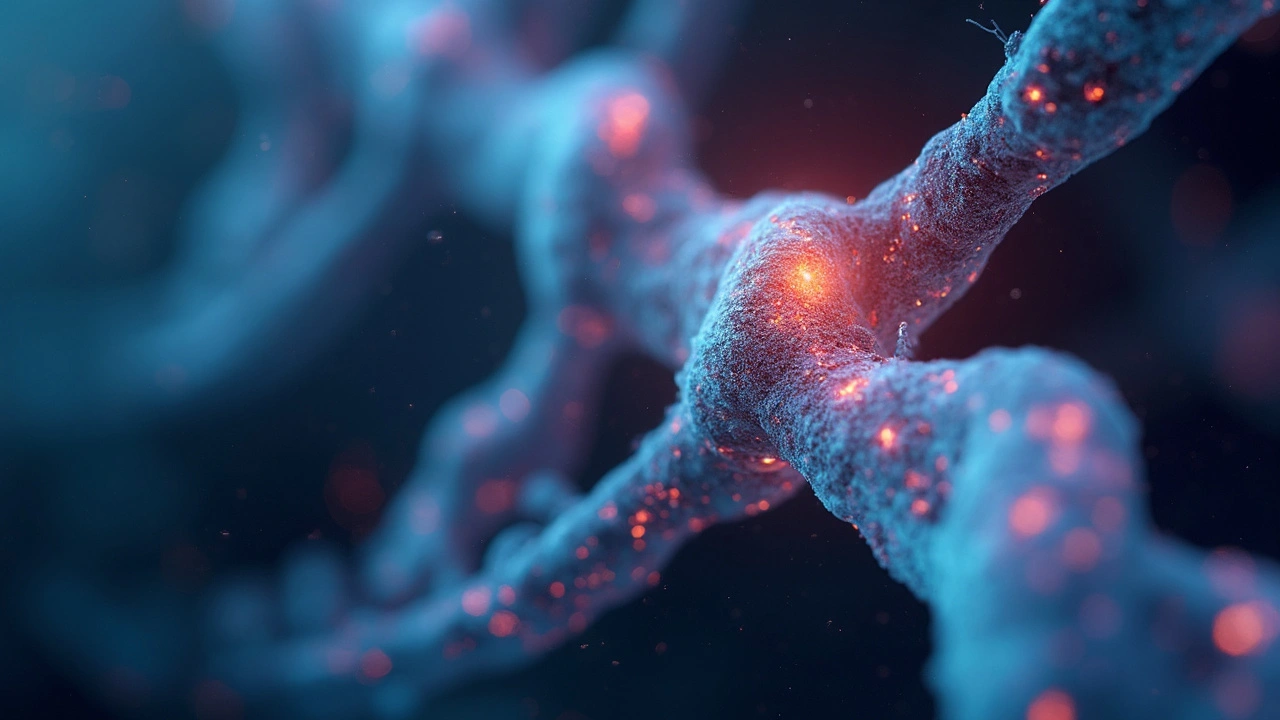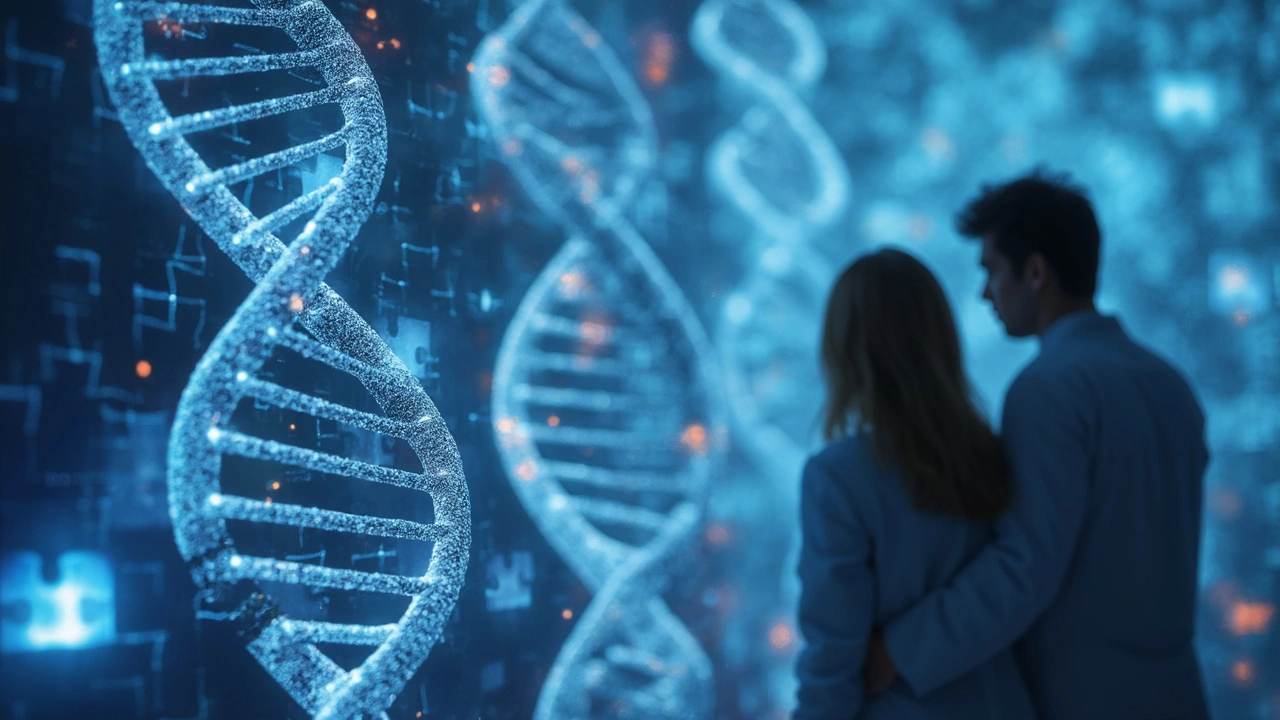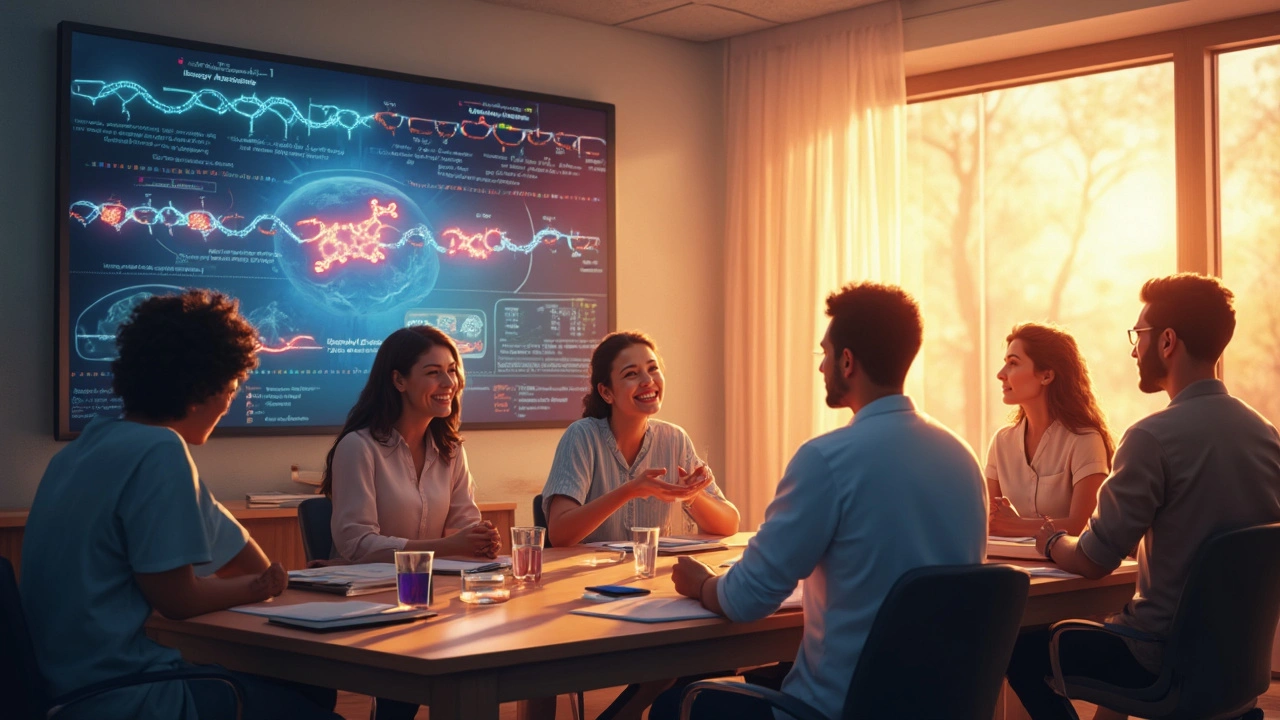Imagine being told you have a type of cancer where a single, microscopic shuffle in your DNA sets the tone for the years ahead. That’s the reality for anyone facing chromosome-positive lymphoblastic leukemia. We tend to picture leukemia as just ‘blood cancer,’ but the real story is far more layered, with chromosome quirks playing the lead role—sometimes stacking the odds, sometimes offering hope. Hidden beneath the microscope are codes, breakages, and fusions that have a lot to say about how tough the battle could get and what medicine might work best. The names are long, the details feel overwhelming, but cracking this genetic code isn’t just science—it’s about what happens next for real people.
Chromosome-Positive Lymphoblastic Leukemia: What It Actually Means
Let’s get a handle on the basics. Lymphoblastic leukemia, especially the acute type—acute lymphoblastic leukemia, or ALL for short—is a cancer of the white blood cells. What makes ‘chromosome-positive’ leukemia stand out? It’s not just leukemia; it’s leukemia with a twist: a known, visible chromosomal abnormality. Think of it as an identifying badge—you can see the genetic glitch under a microscope. The most famous is probably the Philadelphia chromosome, which isn’t a sightseeing stop, but a genetic train wreck where parts of chromosome 9 and 22 swap ends. This tiny accident makes the BCR-ABL fusion gene, which tells cells to grow out of control. That’s just one piece of the puzzle—there are others, each with their own personality and threats.
Young kids, teens, and adults can all get chromosome-positive ALL, but the distribution of these mutations can differ. For example, the Philadelphia chromosome pops up more in adults with ALL (about 20-30%), but less so in kids (closer to 3-5%). Other chromosomal oddities—like MLL gene rearrangements or high hyperdiploidy (too many chromosomes)—show up more in certain age groups. Each abnormality is linked not just to how the cancer grows, but to how it responds to treatment. This matters. If a doctor finds you have a BCR-ABL rearrangement, the treatment plan can swing drastically from someone with a different mutation. Some mutations mean the leukemia grows fast and resists standard therapies, which can make things feel dicey. But others can actually mean a better shot at remission if caught and managed early with the right drugs.
Another key thing: ‘Chromosome-positive’ isn’t one disease—it’s a family of diseases. The specifics of the genetic change shape everything from symptoms to recovery potential. You’re not just a statistic or a ‘case’—the chromosomes tell a personal story that’s surprisingly individual. Knowing which type you’ve got is the linchpin that sets up all the decisions that follow: which drugs to use, whether a bone marrow transplant makes sense, and how close you need to keep your hospital bag. It can be daunting, but that label—chromosome-positive—actually opens doors to more targeted, possibly more effective, treatment options that plain-vanilla leukemia patients didn’t even have a decade ago.
Here’s a strange fact: some chromosomal changes, while they might sound scary at first, actually signal a better outcome than usual. For example, hyperdiploidy (extra chromosomes, especially in ALL in young children) can mean the cancer is more likely to respond well to standard chemotherapy and the outlook can be very good. On the other end, the Philadelphia chromosome used to spell disaster. But now, with the development of targeted tyrosine kinase inhibitors (like imatinib), those odds have shifted in a big way. So, every chromosome mix-up tells its own story—sometimes grim, sometimes unexpectedly optimistic.
The Big Players: Types of Chromosome-Positive Lymphoblastic Leukemia
It’s one thing to know chromosome-positive ALL exists, but what are the types you might hear whispered across a doctor’s desk? Here’s where the alphabet soup begins—but stick with me, because knowing these names can genuinely make things less frightening. The star of the show is the Philadelphia chromosome (Ph+ ALL), but there’s a packed supporting cast. There’s the MLL (Mixed-Lineage Leukemia) rearrangement, ETV6-RUNX1 fusion, hyperdiploidy, hypodiploidy, and some others that are less common but still carry their own suitcase of surprises.
Chromosome-positive lymphoblastic leukemia with the Philadelphia chromosome is the type you’ll most commonly hear about in adults. Basically, it’s a swap of genetic material between chromosome 9 and 22, creating what’s called BCR-ABL1. This triggers a non-stop ‘grow’ signal for white blood cells, wreaking havoc. Ph+ ALL used to be very tough to treat, but these days, with drugs like imatinib and dasatinib targeting BCR-ABL1, the story is changing. Next up, there’s the MLL rearrangement, found more in infants and sometimes linked to poor prognosis. This isn’t one single change—MLL can fuse with a variety of partners, each tweaking outcomes in different ways. It’s especially notorious in babies under a year old diagnosed with ALL.
The ETV6-RUNX1 fusion is a different beast—it’s actually tied to a really good prognosis, especially in young kids, and happens when chromosome 12 and 21 swap parts. If you or someone you know is told they have this type, the odds are decent that standard chemo can do a solid job. It’s one of those occasions where news about a chromosome switch can actually bring relief. Hyperdiploidy has its own quirks: kids with this usually have a larger number of chromosomes in their leukemia cells (more than 50, when normal is 46). Oddly enough, more chromosomes can mean the cancer is easier for chemo to smash. Then you have hypodiploidy, the opposite problem—not enough chromosomes in the cells—and that’s generally bad news, making the disease harder to treat and more likely to relapse.
Some rarer types involve T-cell ALL, which themselves can be chromosome-positive. Certain T-cell ALLs may carry changes like TLX1, TLX3, or SIL-TAL1 rearrangements, messing with the way blood cells develop. The clinical significance of each varies—some are linked to higher relapse rates while others are still being studied for their true impact. Doctors now use specialized tests—like fluorescence in situ hybridization (FISH) and next-generation sequencing—to nail down exactly what genetic shifts are in play. It’s not just academic. The days of one-size-fits-all leukemia therapy are fading, and these nuances tell your care team what to expect and how to attack.
Modern clinics in places like Bristol or London can run a molecular diagnostic workup that analyses dozens of genes in a sample. This means even rare stuff gets picked up, and patients have a clearer idea of what the road ahead holds. Knowing which chromosome change you have cracks open the box on personalized medicine, giving entry to therapy options geared to the unique genetic fault—rather than just pouring in chemicals and hoping for the best.
For parents or young adults just diagnosed, these subtypes matter just as much as age, symptoms, or white cell count at diagnosis. Sometimes, two kids with ALL might look similar on paper, but one has an ultra-high risk gene rearrangement, and the other has an easier-to-treat form. That difference shapes everything from length of therapy to the restrictions on daily life. For many families, just having a simple explanation of their subtype—and what it really means—can cut the anxiety and allow them to focus on the action steps. Ask about genetic testing and don’t be shy: it’s not just for scientists, but central to decision-making.

How Chromosome Abnormalities Shape Prognosis
If there’s one truth in cancer, it’s that the details matter. Chromosome changes in lymphoblastic leukemia often lay out the odds like a blackjack table: sometimes stacked in your favor, sometimes not, but always changing as medical science catches up. For example, before the early 2000s, having the Philadelphia chromosome practically guaranteed a poor outcome—think survival rates in the single digits for adults. Now, with targeted therapy, that’s jumped into the 40-50% range in some studies. For kids, the high-risk MLL rearrangement in infants still signals a tough fight, but even here new drugs and approaches are opening up early clinical trial possibilities.
Here’s the catch: prognosis isn’t just ‘good’ or ‘bad’—there’s a whole spectrum, and it’s evolving. Some chromosomal changes make leukemia cells more sensitive to chemotherapy. For example, children with hyperdiploid ALL and ETV6-RUNX1 fusions routinely reach long-term survival rates above 80%. But if a child has hypodiploidy or MLL gene issues, survival rates are a lot lower (sometimes below 50%), and relapses may occur more quickly and unexpectedly. This isn’t meant to scare, but to stress how important genetics have become in planning the right attack.
Adults don’t get off easy, either. Age matters—a lot. The older the patient, the fewer the treatment options and the longer the side effects tend to stick. But even for older adults, knowing the specific genetic alteration helps dodge ineffective treatments and try new regimens sooner. Genetic information is also plugged into so-called ‘risk stratification’ models. These models guide doctors: should they use only chemotherapy, add a tyrosine kinase inhibitor, or refer straight to a stem cell or bone marrow transplant? For certain high-risk genotypes, transplant may be suggested right off the bat if a matching donor can be found.
It’s also worth knowing that the technology itself is getting better, so ‘prognosis’ can shift even in the space of a few years. As one leading UK-based hematology consultant put it,
"We’re not just fighting cancer; we’re hunting down its genetic footprints, and that changes the endgame entirely."This shift to precision medicine isn’t hype—it’s visible in year-on-year survival stats. Of course, relapse remains a risk for all subtypes—but knowing which genetic ‘signature’ you have can help doctors catch a relapse sooner, tweak medications, and lock you in to clinical trials with cutting edge therapies.
Treatment decisions, lifestyle recommendations, and even fertility planning can all hinge on these fine genetic details. For people wrestling with relapse, new genetic analyses can sometimes reveal treatment avenues missed before. So, if you—or a loved one—gets a chromosome analysis as part of a leukemia diagnosis, ask what your specific mutation means, how it shapes risk, and what the plan is for spotting early relapse. The more you know, the stronger your hand at this table.
Treatment Strategies: How Genetics Guide Therapy
For the average person, chemotherapy is the first thing that springs to mind with leukemia. But that’s just one weapon in the arsenal, and chromosome changes are what tell doctors which weapons to unleash—and in what order. Take Philadelphia chromosome positive ALL: treatment nearly always includes a tyrosine kinase inhibitor (TKI). These drugs, like imatinib or dasatinib, act like sabotage squads, blocking the runaway BCR-ABL protein and shrinking leukemia cell numbers fast. This combo of TKI plus chemo has pushed five-year survival for many patients from under 20% to close to 50%. Sometimes, if a good remission is reached and a donor match is available, allogeneic stem cell transplantation enters the frame. But TKIs have changed the urgency for transplant—it’s no longer always a must-do step.
Other types require different moves. For instance, patients with the ETV6-RUNX1 fusion usually respond so well to regular chemotherapy that more toxic treatments are unnecessary. Good genetic markers mean less time in hospital and a shorter route back to normal life. For those with MLL rearrangements or hypodiploidy, researchers are testing new drugs, including immunotherapies and enzyme inhibitors, to chip away at stubborn leukemia cells. It’s still early days, but hope is higher when therapy is tailored, not just thrown at the wall.
Treatment intensity is guided more and more by risk group. Low-risk? Shorter treatment, fewer drugs, possibly fewer long-term side effects. High-risk (like those with certain gene shifts)? Everything is on the table: stronger chemotherapy, targeted agents, and file-you-right-into-a-clinical-trial if things get bumpy. This is especially true for relapsed or refractory cases. In the UK, NHS guidelines now expect every patient’s leukemia cells to get a ‘genetic fingerprint’ before therapy choices are nailed down.
There’s excitement around newer frontiers, too. Chimeric Antigen Receptor (CAR) T-cell therapy, where a person’s own immune cells are re-engineered to hunt down cancer, is making inroads for children and younger adults with hard-to-treat genetic subtypes. While not yet standard for everyone, it’s giving measurable remissions in patients who’ve already relapsed, regardless of some genetic risk factors. Meanwhile, new molecules are in the pipeline for specific mutations—one day, a lab result might mean just popping a daily pill rather than slogging through months of chemotherapy.
If you’re sitting there, diagnosis in hand, don’t hesitate to ask for a second opinion—especially about genetic markers or if someone offers generic treatment advice. The science moves quickly, and not every clinician has the most slavish devotion to staying on top of niche subtypes. Patient and parent advocacy groups, especially in the UK, spotlight genetic risks and keep an ever-updating library of clinical trial openings tailored to your specific chromosome change. Plug in and ask questions. When it comes to leukemia, no detail is too small—and the tiniest genetic twist can mean the difference between tough odds and a route through to normal life.

Survival, Monitoring, and Living with Chromosome-Positive Leukemia
So, what does the future look like after you start treatment? The word ‘remission’ is the golden ticket, but it isn’t the whole story—especially for chromosome-positive ALL. For most people, remission means the blast cells (the immature white cells) are wiped out and blood counts bounce back, but regular checks are crucial. Minimal residual disease (MRD) monitoring—basically, using sensitive lab tools to find tiny traces of leukemia—has changed follow-up care for the better. MRD-positive at specific checkpoints? That could mean cranking up therapy or making an early jump to transplant. MRD-negative? Doctors can sometimes lower treatment doses and reduce side effects.
Many people are surprised at how lifestyle and day-to-day tracking slot into survival. Patients with high-risk genetic changes may have more frequent appointments, extra scans, and sometimes more aggressive infection prevention. It’s not just the hospital grind anymore—digital tools, home blood monitoring kits, and telehealth links to specialists in the UK and around the world have made it easier to keep on top of things between check-ups. Survivorship clinics are springing up in larger cities to monitor for late effects, too, especially if you had high-intensity or experimental treatments.
What about relapse? With many genetic types, relapse used to mean a death sentence or, at best, an exhausting scramble. Now, with targeted therapies, more people experience a ‘second remission’—often long enough to qualify for new treatments or a clinical trial windfall. The developments in MRD tracking mean some relapses are spotted months before symptoms show up, so action can be taken early. Always ask your doctor how specific genetic results affect follow-up protocols; it’s worth the awkward questions to know if a bespoke monitoring plan exists for your case.
Living with the diagnosis isn’t all about medical stats. Family life, career moves, even long-term plans like having kids—these are shaped by your chromosome type and treatment approach. Many centers now have genetic counselors and fertility clinics ‘baked in’ to leukemia care, so even if the future feels upended, you’re not navigating blindly. Financial assistance schemes run by NHS or UK charities can step in if your genetic risk level makes you eligible for special support, travel grants, or drug funding.
A good tip: ask about psychological support from the start, especially after scary-sounding chromosome results. The anxiety isn’t just about survival—it’s about uncertainty, and about every scan or blood count stirring up new fears. Peer groups—whether in Bristol, Manchester, or online—are loaded with people sharing real-lived experiences about specific chromosome subtypes. If you’re newly diagnosed, seeing a face or reading a message from someone with your genetic abnormality who’s back to living dense, normal life can be more hopeful than any stat or press release.
Don’t underestimate the power of knowledge: patients who understand their chromosome-positive subtype are more likely to follow through with tricky treatments and push for early intervention if things wobble. At the end of the day, the DNA loop that triggered the whole thing can’t be undone yet—but knowledge, targeted drugs, and close monitoring mean more people in the UK (and around the world) are surviving, and even thriving, after facing down these genetic curveballs.

